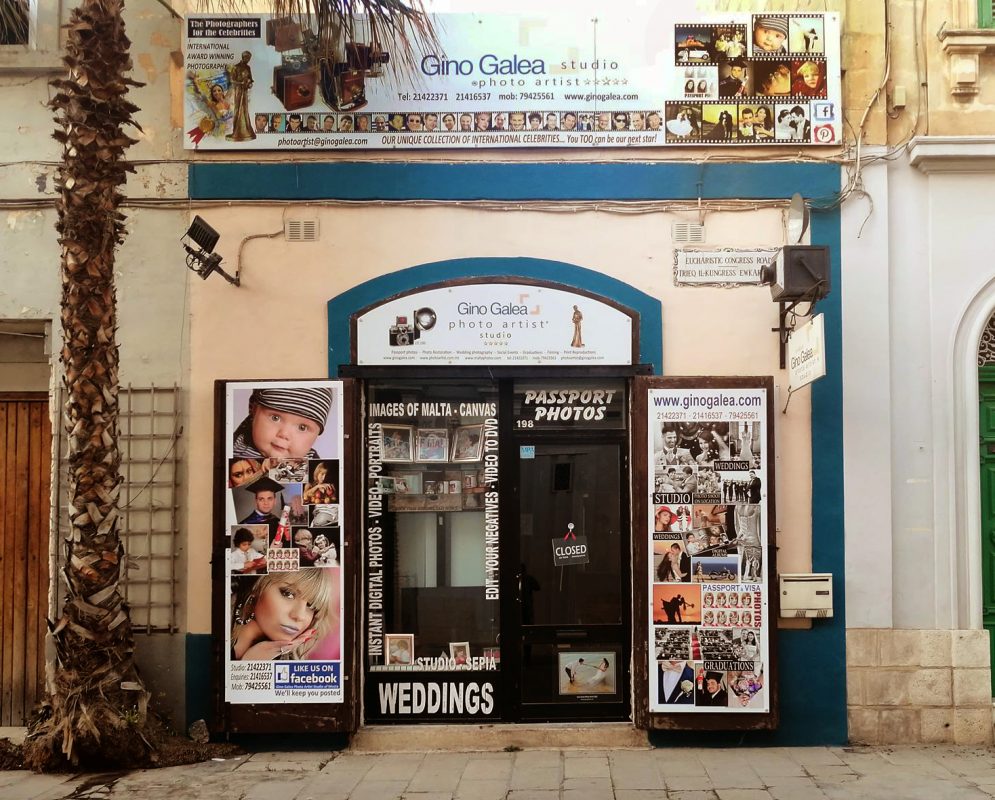A ‘Systems of Knowledge’ project – The Journal
Meeting 1: 10-Jan-2007 – Location: Luqa – Time: 15:30-17:00
Today at 15.30, I went to meet Mr. Gino Galea which I had previously contacted with regards to the Systems of Knowledge project related to photography I wanted to carry out. Mr.Galea, an established photographer, well known both locally and internationally, was very helpful with understanding my request and once I had explained clearly the purpose of my task, he immediately started to hand me valuable information about his professional field.
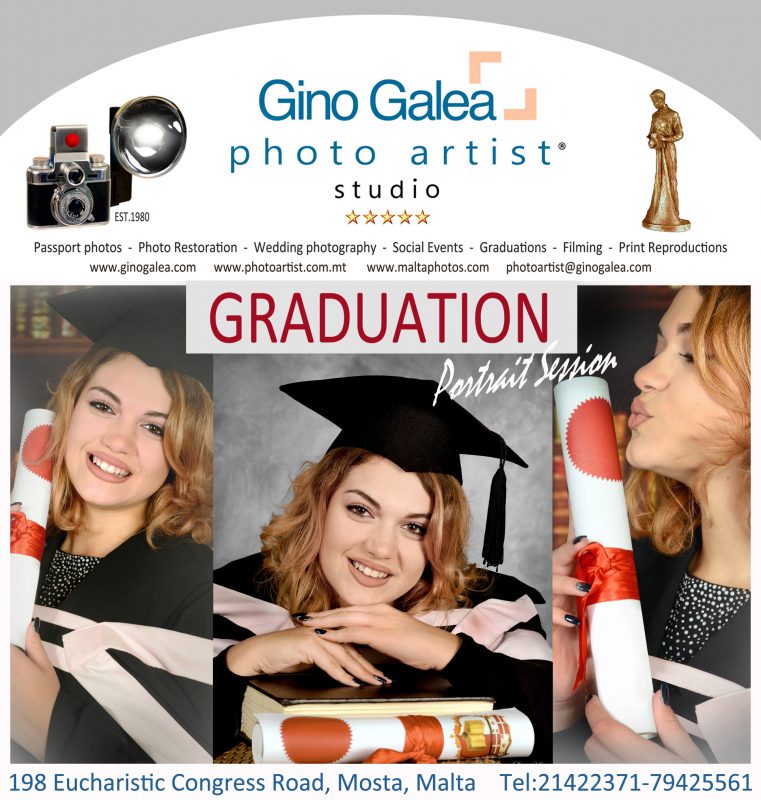
The first item of our discussion was the impact of an image or photograph on the viewer. As with any other form of art, photography has to pass on a message to the observer, depending on the specific category under which the image is classified. There are various categories of photography, as Mr.Galea said. To mention just a few, photography can be split into tabletop /still life photography, studio photography, wedding photography, commercial photography, fashion photography, PR photography, interior décor photography, portraiture, landscape, architectural photography and more.
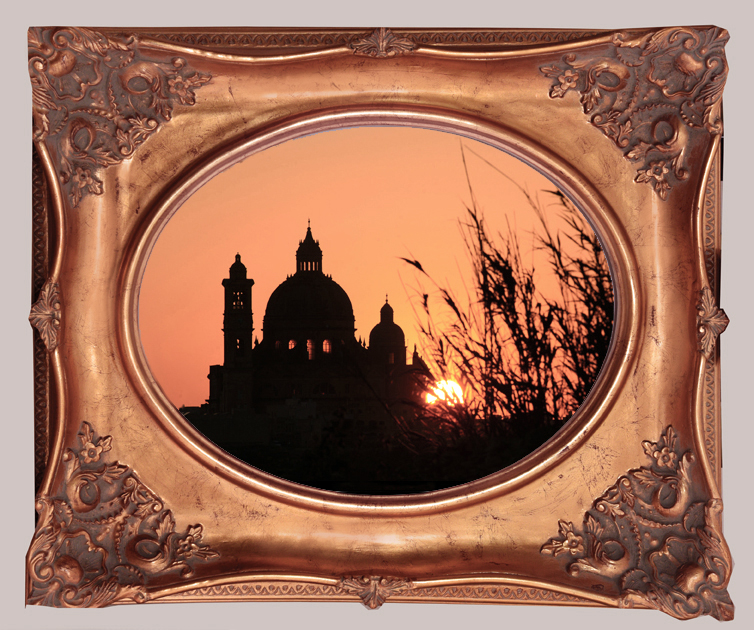
Another important feature of photography that affects its aesthetic value is the medium with which the image is processed and developed. Photos can be printed in black and white, in sepia, with a pastel finish, or colour, for instance. Finally, it is also important that an artistic photograph is well presented. A photographer, as Mr.Galea told me, has a wide choice when coming to choose the style in which the photo is to be presented. The final presentation also depends on the category of the photo, for example, a wedding session is usually presented in the form of a photographic album, whilst portraits and interior décor photos are more likely to be bought for their aesthetical qualities, and hence would be presented in a frame. There are also times where the photographic presentation has to vary, as in the case of magazines, where the photographer has to make the best of the space that has been allotted to his photos.
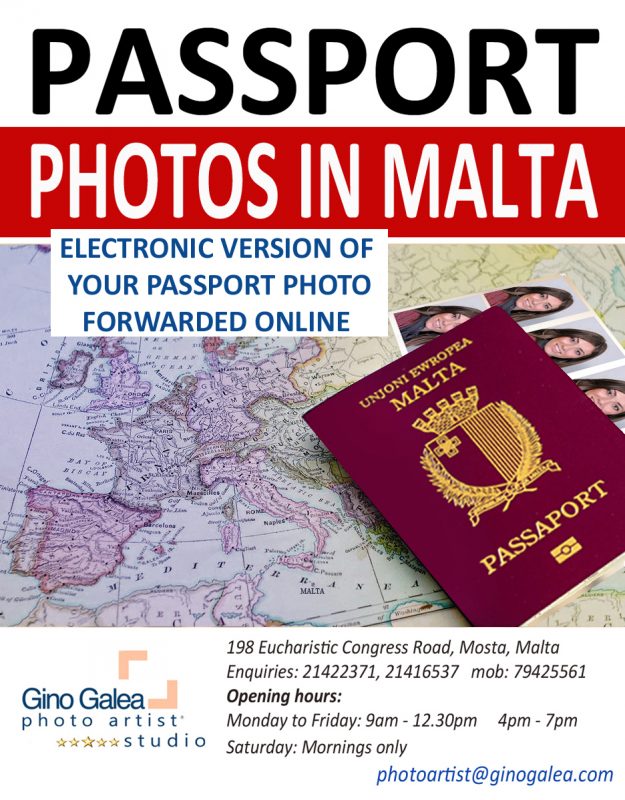
After
this brief explanation, Mr.Galea concluded by stating a few technicalities that
are essential for a good photograph. As Mr.Galea explained, the composition of
the photo is the trademark of every photographer, and every photographer has
his own individual style of composing the image. Good photo composition, Mr.Galea said, can be
achieved by looking at the subject matter through the camera’s viewfinder and
mentally highlighting the most important features and aiming to bring them out
in the photographic shot. The eyepiece
lens and the type of camera are important to determine which type of shot the
photographer can take, the photographic editing software helps modify the image
to bring out the artistic elements within it. Finally, the kind of output
processes and materials used to create the definitive image give the photo its
ultimate artistic values.
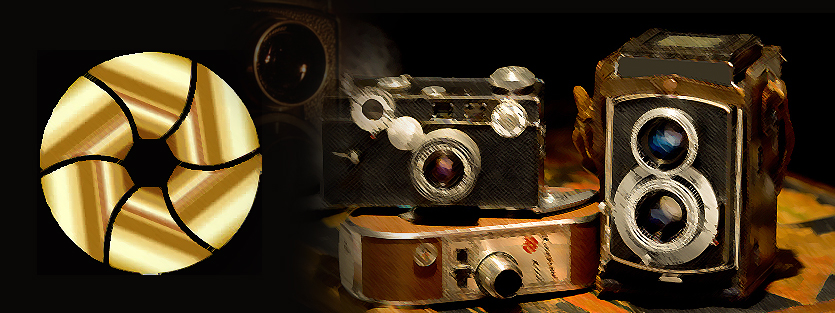
Meeting 2: 28-2-‘07
Location: Mosta
Time: 17:30-19:15
During this meeting, which was my first meeting at Mr.Galea’s photo artist studio in Mosta, I was introduced to the staff working or in training at his studio, and also to the items that prove invaluable to the photographer during his work in his studio.
I was to observe Mr.Galea as he dealt with his clients and to take notice of the way in which he strove to create the most artistic image by taking several shots in a different angle to make sure that the client has the widest range of choices when coming to select the pictures for development. First of all, as Mr.Galea took me round his studio full of samples of his magnificent work, I was able to notice that the area where he was taking the photos was separated from the rest of the studio by means of a curtain. This is intended to cut off any disturbance coming from ‘third parties’ that might disturb the models and therefore affect the final product. Hanging down from one wall were various backdrops, which are put in the background of the image, as the client has to pose in front of them when photos are being taken. Mr.Galea said that these backdrops are very important since they help bring out the colours of the client’s garments and accentuate facial features. A lamp offset towards the left of Mr.Galea illuminated these backdrops; this gives the photographer with balanced lighting that floods the background and the model at different angles, therefore, eliminating any shadows created by the studio lights.
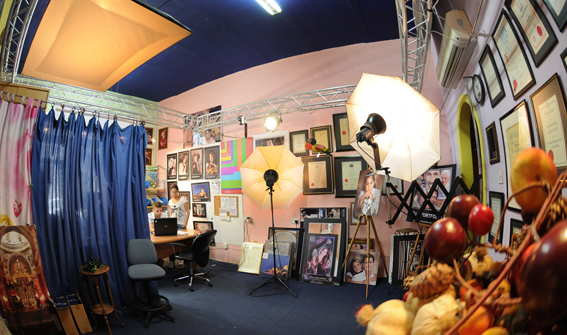
Furthermore, there where two remotely controlled flash projectors, known in the photographic field as studio heads, that give off a flash of light at the same time as the flash from the photographer’s camera. This simultaneous flash from the two studio heads is synchronized by means of an IR transmitter attached to the camera, which sends a signal to both studio heads when the camera’s flash is triggered. This synchronization is vital since the flash from one studio head cancels out any shadow created by the flash of the other studio head and vice versa, and the IR technology has rendered the photographer’s life easier since it reduces the time taken to cancel out the shadows in the developing lab.
Once the photo has been taken, it is downloaded from the photographer’s digital camera, ie using a CF Memory Card together with a compatible card reader, where the photo is then saved to be edited, resized and modified further on. During this process, the photos are sorted in alphabetical order and any details about the client and/or specific requests are noted. This is important since it makes sure that no image is lost or misplaced. After this stage, the process continues with the shortlisting of the photos by the client himself.
Meeting 3: 7-3-‘07
Location: Mosta
Time: 18:00-20:00
When I went to Mr.Galea’s studio next, I spoke to his assistant who explained the shortlisting process. This is the stage when the client is called to the studio so as to select his favourite photos prior to the editing stage. The quantity of photos and the size with which they will be printed depends on the package chosen by the client according to his own requirements and personal budget. The package varies according to the client’s needs, depending on what use of the final photo the client wants to make. For example, the client might request that the photos are printed and then laminated. Lamination is the coating of the photograph by a thin film of plastic sheeting, therefore, making the photograph more resistant to weather conditions and cleaning.
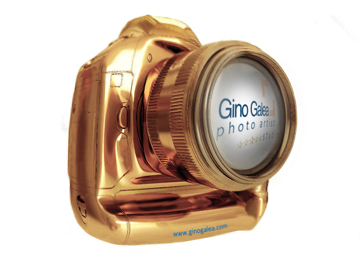
After taking shots for a couple of clients, Mr.Galea explained that the process continues with the editing of the shortlisted photos using software such as Adobe Photoshop, which has rendered the editing of photos such an enjoyable experience! In the ‘old’ years one had to use a number of ‘effects’ filters at the shooting stage, together with a lot of darkroom ‘tricks’ and techniques using chemicals at the actual printing stage in order to create some artistic effects. This present digital technological breakthrough has provided the professional photographer with a great advantage to have ‘total control’ of his work before the printing stage. This not to mentions the aspect of ‘creativity’ that consequently has become more accessible to the traditionally ‘not so artistic’ photographer. To a certain extent, this digital process has greatly reduced the workload of the photographer, allowing him to be able to process the images much faster than he used to, and hence the waiting times for the client have been abridged. Since I am very much into IT, this part of the whole process of developing a photo proved hugely interesting.
In order to better demonstrate the process, Mr.Galea selected an image of a male model and took me to step by step through the process. To start off, the first thing the photographer has to do is to crop the image, which is removing the extra background space from the image. Then the colors in the image are balanced to the photographer’s liking since this gives it the vivacity of a truly artistic photograph. Following the ‘cropping’ stage, the photographer corrects certain areas of the image where there could be minor flaws. This is done by burning, dodging and cloning. Burning is to darken specific areas of the image, like for example the forehead, which has a tendency to appear ‘whitish’ probably to the flash bursts; dodging, on the other hand, lightens up the colours in a specific area; both of these processes help in increasing the colour balance of the image. Cloning is the tool that allows the photographer to copy segments of the image and paste it onto another section of the image. This is usually done to hide imperfections in the subject matter, such as acne marks on skin amongst others.
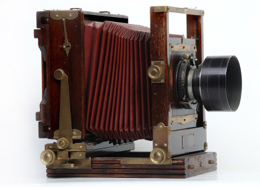
The process then carries on with the application of artistic effects to the photograph, where the photographer is able to express himself freely in his artistic style. In this particular case, with the photograph being a portrait, Mr.Galea chose to apply what is known as the vignette style to the photo, which means blurring the outer edges of the photo so as to focus the concentration of the viewer on to the center of attention, that is, the model. This is done by selecting the area around the model’s face using an elliptic marquee, then inverting the selection so that the area surrounding the face of the model becomes selected, and finally blurring that areas at the edges of the image. After the style is selected, the photographer proceeds in choosing the appropriate medium with the client’s approval. Mr.Galea remarked that there are other artistic techniques that could be carried out afterward. To exemplify, he stated that if the photo is given a sepia type medium, the photographer can then decide to apply ‘spot colouring’ to certain areas/objects, in order to create a different artistic effect. In any case, he said, that the next step in the formulation of the final artistic photo is that of quality printing.
Meeting 4: 28-3-‘07
Location: Mosta
Time: 17:45-19:30
At the studio once again, I met Mr.Galea who was very busy tackling huge amounts of requests, as there was a photographic competition taking place at the time, and loads of clients were coming to his studio for a studio session. The models where teenagers from every locality, since the beauty competition, Mr. and Mrs. Locality 2007, was aimed at giving young models a chance to compete against each other by representing their hometown. This provided me with an excellent opportunity to take note of a few photographic techniques that could help the amateur photographer capture a good quality image and to get to know a bit more about the details of photographic competitions together with the fact that ultimately this would, of course, promote the photographer’s own business.
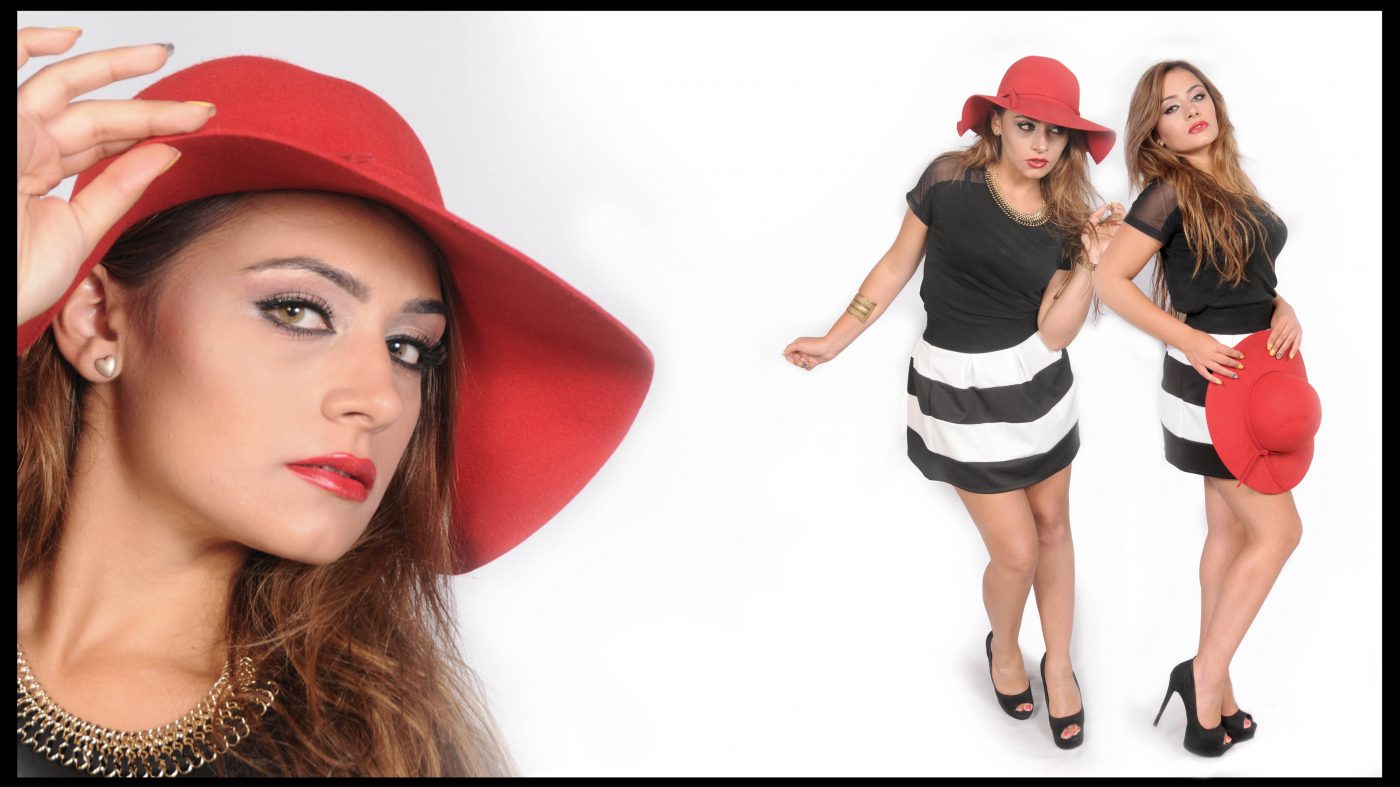
During this session, the focus was on portraiture and half-length shots, though a few full-length shots were taken too. It was essential that the photographer took as many shots as he could of the model in different poses, so as to give the client the best product for selection. Since this was a modeling competition, through which the artistic qualities of the photograph together with the originality of the poses are those many important elements that gives the competitor the winning edge, a lot of emphases were allotted to bringing these characteristics out. Thus the photographer has to make use of his experience and knowledge while making substantial use of his abilities at manipulating such images with that all-important photo-editing software, so as to make sure that the client looks even better. This would substantially assist him in capturing the highest placing possible, giving the photographer’s work good coverage with the general public in order for him to attract more business.
Meeting 5: 15-3-‘07
Locations: Zabbar, San Gwann and Lija
Time: 16:00-01:00
In this meeting, involved me playing a more hands-on role in professional and artistic photography since I assisted Mr.Galea during a wedding photographic coverage, where I was to be his helper. The role of the photographer’s helper is very important, since the assistant, armed with a portable high-power flash device has to provide the photographer with the desired lighting during the photo session, and also help the photographer by having extra equipment or spares that the photographer might need just in case the flash does not fire or the battery which powers the camera and flash goes flat. The wedding session included going to the groom’s house and taking a few pictures of him and his family before the wedding, followed by going to the bride’s house and taking a few shots of her with her family.
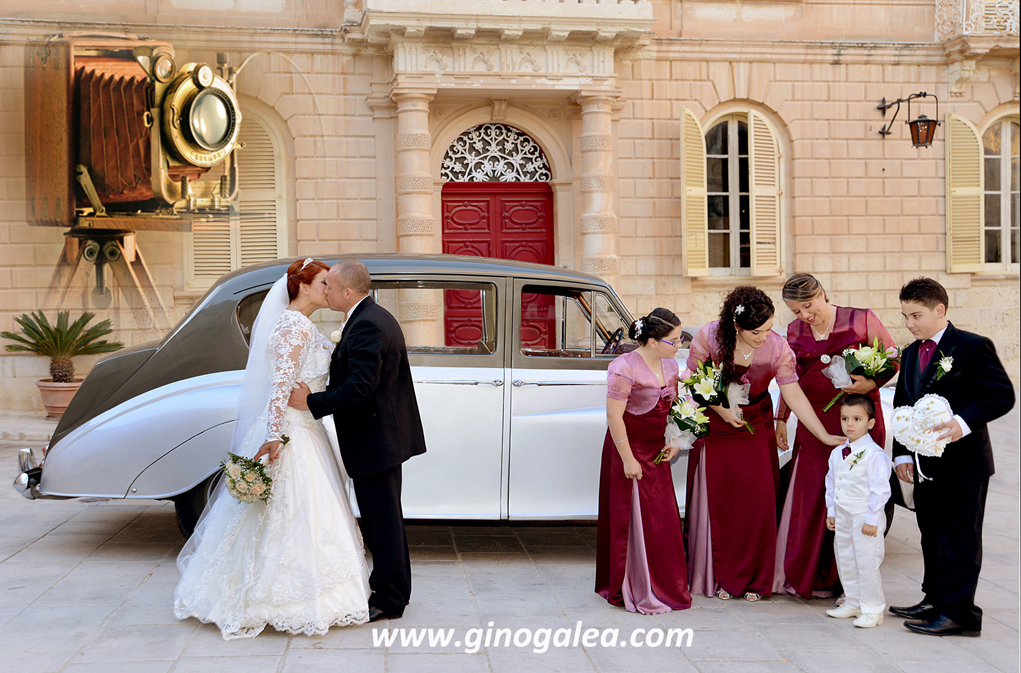
After the shots at the clients’ houses, we went to the church where the marriage was to take place and I assisted Mr.Galea as he portrayed the couple while the priest was celebrating the ceremony. Then, after the ceremony was over, the couple heads to the reception hall, where Mr.Galea had the hard job to take photos of the couple meeting with their guests casually. My job here once again was to lighten the background with my synchronized flash system, therefore, eliminating the hard shadows that the photographers direct flash burst would create du to the fact that it was an open/roofless area, which therefore meant that he could not use any bounce flash.
Speed and discreetness are vital since it is the photographer’s professionalism to take an ample variety of shots without disturbing the couple or the ceremony in the church; while taking as many images as possible so that the couple would have a very good selection to choose from in the long run. Mr.Galea emphasized the fact that the more the photographer carries out his job in such a discreet style, particularly during a wedding occasion, the more this would reflect positively in promoting his business with other prospective clients in the long run.
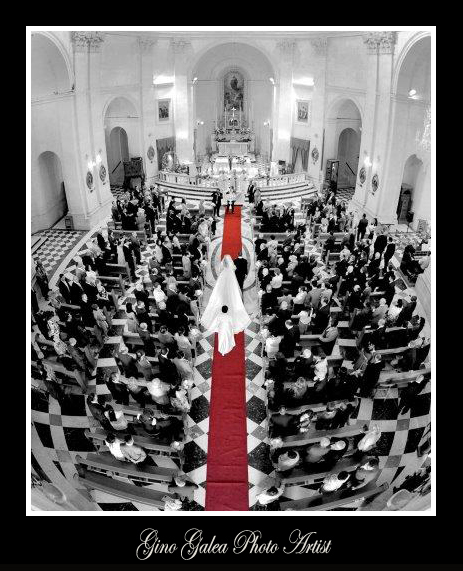
Meeting 6: 2-5-‘07
Location: Mosta
Time: 17:15-18:30
My next meeting with Mr.Galea took place during the time where another photographic modeling competition was taking place, this time for other beauty titles, namely Mr. and Mrs. Photogenic. At the studio, Mr.Galea and his assistants were working with a hectic pace so as to cater in time to the huge amount of requests that came without mention throughout these times.
Since this competition was also heavily reliant on the way the model is portrayed in the photo and the way in which the photographer has managed to highlight the best parts of the model’s physique and posture, Mr.Galea had to create as a good variety of poses, while allowing the model to act naturally. In these types of competitions and photoshoots, it is of utmost importance that the model feels comfortable with the photographer in order to get the best of the pictures. The aim of the photographer in these types of shoots is to capture expose the best photogenic look of the model.
Meeting 7: 23-5-‘07
Location: Mdina
Time: 16:30-19:45
When we got on location, we met the crew and the four young models, two males and two females, since the theme of the program for that week’s broadcast was to be fashion photography for the young men and women. The crew had to record some video footage of Mr.Galea as he took photos of the models in different poses and in different areas of the ‘old capital city’, in order to have a different background against which to portray the models. Architecture, vegetation, weather formations, and backdrops of the island as seen from the city are excellent themes in providing a photo with an illusion of depth. However, since the session took place on the outside in the available light conditions, and not in the studio where the photographer can control the variables which affect the artistic quality of the photo, Mr.Galea told me, the photographer may have to wait for a few moments before capturing the image, allowing these variables time to be change before the capturing of the image. On the day these variables happened to be the moving clouds diffusing the direct sunlight on and off. This puts a lot more stress on the photographer since he must wait for the right moment before each capture, and if the conditions are unfavorable, the shooting of such photos is delayed.
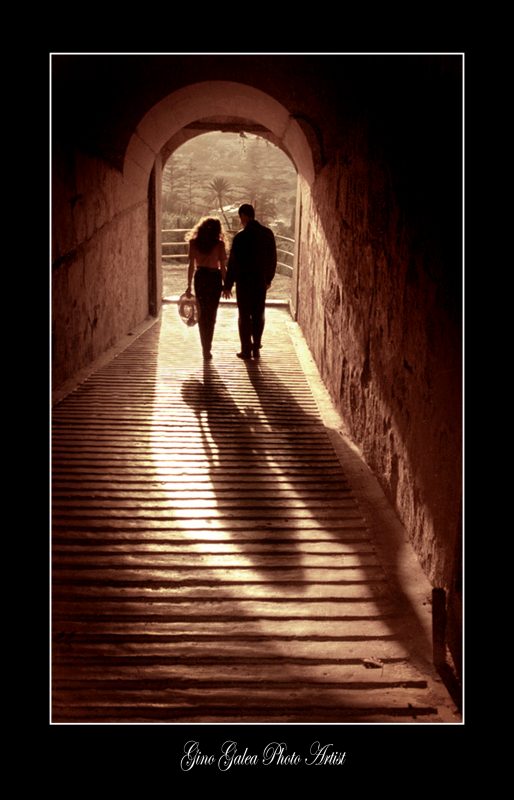
Meeting 8:30-5-‘07
Location: Mosta
Time: 18:00-19:15
During this meeting with Mr.Galea, clients were swarming in to have a photo session of their children’s Holy Communion at his studio. The studio was specially set up with specific props and items to complement the holy occasion. Such a studio session involves the use of specific poses and since the client is wearing white, a dark backdrop would be ideal.
Most likely, the photos from this photo session, Mr.Galea said, will be framed and used to decorate the house of the client, and hence it is up to the photographer to portray the children in the most artistic of ways and the images should illustrate the character of the child. This involves cropping the photo with the editing software so that the photos match the format of the frame chosen by the client. The ultimate portrait would eventually be manipulated to include the image of Jesus Christ giving communion to the protagonist of the day.. ie. the kneeling child.
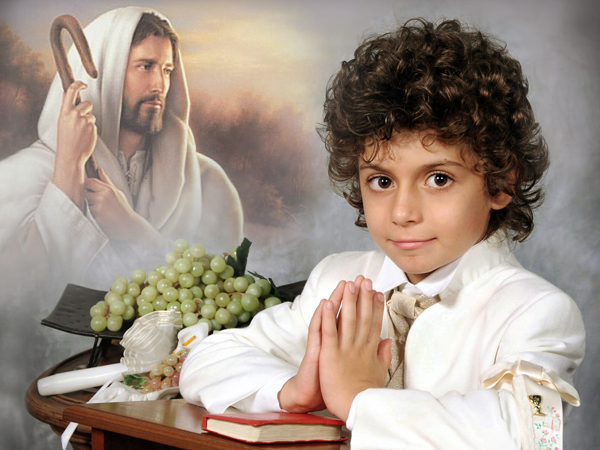
Meeting 9: 25-8-‘07
Location: Mosta
Time: 10:10-13:00
I met Mr.Galea next after I had taken photos of various Maltese locations during a multinational youth exchange in which I participated during the summer. During this exchange, teenagers from the catholic youth associations of KJG from Germany, eRko from Slovakia and ZAK Swatar from Malta were to spend ten days at the Archbishop’s Seminary in Rabat. As a member of ZAK Swatar taking part in the exchange, I had ample time to capture images of various Maltese sites while with this multinational group.
Upon showing
Mr.Galea some of the photos, he told me I could shortlist some of my material
so that it would be edited and sent for printing. In the meantime, a few
clients had come into the studio and apart from the usual studio session,
Mr.Galea explained the procedure used in the case of passport size photos. He
then explained the process of photo enlargements, where the photo is scanned
and enlarged using photo editing software; and we also briefly discussed having
photos printed on artistic canvas.
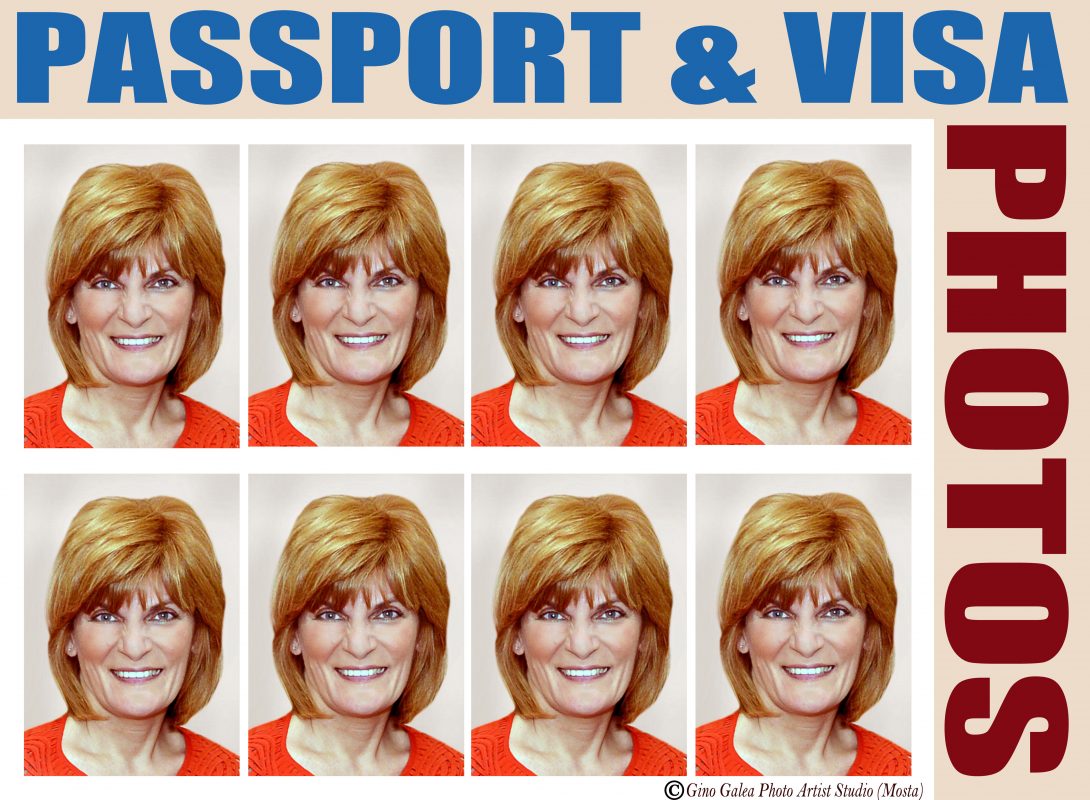
Meeting 10: 1-9-‘07
Location: Mosta
In this meeting, Mr.Galea had to work on a family photo session where the photographer has to focus on bringing out the relationship between the members of the family through the poses and expressions the clients put on. In order to be able to do so, Mr.Galea said, the photographer must establish a friendly relationship with the family, so as they can act as naturally as possible with greater ease, and hence the strength in their relationship comes through the photo.
As with any other client, the photographer aims to take as many shots as possible, and then the family decides what photos to shortlist according to their needs, with the number of photos shortlisted changing to the clients’ discretion. The usual technical editing, manipulations, and procedures explained earlier on are of course applicable in this sort of photo session once again.
Meeting 11: 10-11-‘07
Location: Mosta
Time: 10:55-12:45
During this meeting, Mr.Galea had to work on a photo session with young children and toddlers, where the photographer must be very reactive in order to capture the child in the pose that the photographer, through his experience, knows that it would give him the greatest possibility to express his artistic capabilities. Children, especially young, energetic kids, get easily distracted. Consequently, the photographer has to make use of several toys and props to attract the child’s attention, allowing the photographer to capture the best shots. The actual working time frame for such shoots is very minimal due to the child’s mobility.
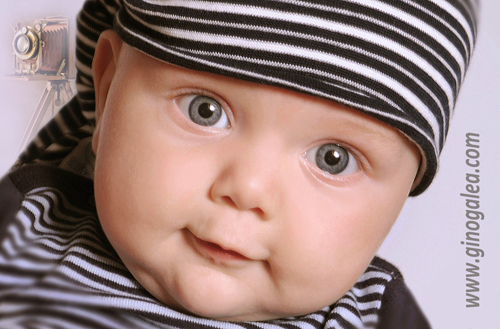
After the photo session, Mr.Galea showed me about photo restoration. Restoring an old photo involves scanning the photo, which is often very damaged, with pieces missing or the photographic paper being crumpled or punctured. The scanned image is then manipulated using the photographer’s editing software, particularly the ‘clone tool’ where the photographer uses his knowledge of photographic artistry in order to fill in the missing areas of the print so that the image is restored to a better condition.
You are welcome to LIKE and SHARE our official page on Facebook: https://www.facebook.com/maltaweddingphotographers/
Meeting 12: 17-10-‘07
Location: Mosta
Time: 10:45-12:25
Mr.Galea, like any other professional photographer, is often out of his studio to gather images for his large database of digital imaging. Such pictures can eventually be printed on canvas, framed and utilized to decorate the interiors of buildings or modified as the client desires. On these days, Mr.Galea hands on the running of the studio to other members of his family and staff, and this gave me an opportunity to obtain some feedback from the people who give Mr.Galea all their support in the running of his enterprise.
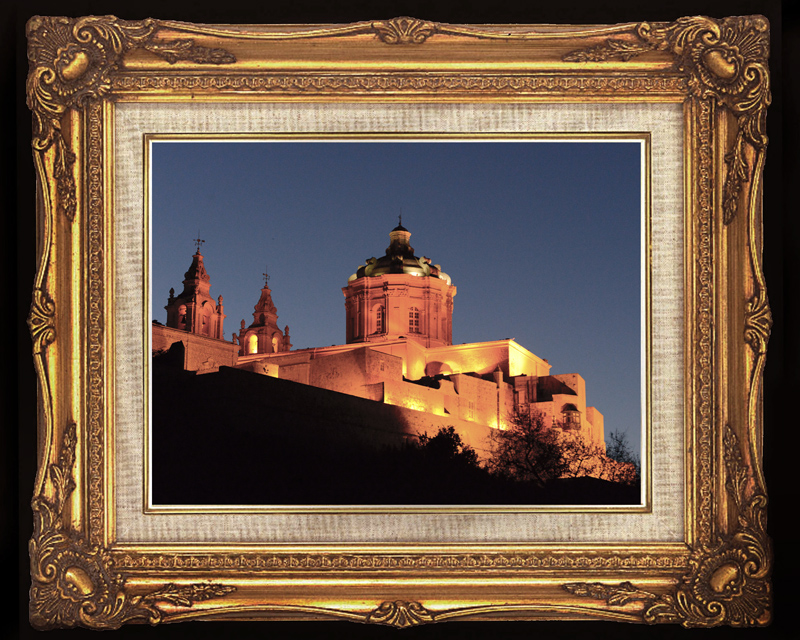
On
his arrival at the studio, Mr.Galea downloaded the newly captured images and
stored them for later editing and manipulation. After he completed this
procedure, he was able to give me some insight into framing the photo after it
is printed. It is important that the frame matches the shape and size of the
print together with the image itself as it is compiled by the photo artist.
Meeting 13: 24-11-‘07
Location: Mosta
Time: 11:00-12:35
At this time of the year, the photographer starts working on requests by people asking for photo sessions with a Christmas theme, so as to have personalized Christmas cards to send to their friends and relatives. During such sessions, the photographer makes use of particular poses that bring out the spirit of unity that thrives within the families in this time of year. Hugging proves to be a very popular choice for a pose since this feeling clearly comes out naturally between the members of a family and it helps them feel more at ease in front of the camera. The photographer also relies on the use of props related to the festive season so to relate the image to the Christmas theme. However, he does not rely too much on these objects for the photo not to appear too made up and artificial. The kind of modifications that the photographer uses in the editing also differ from the usual editing since the artist can insert other images in the picture thanks to the editing software and his own image bank or templates.

Meeting 14: 22-12-‘07
Location: Mosta
Time: 11:15-12:30
This was to be my final meeting with Mr.Galea. I met with him at his studio, where he was speaking with a client about some photos the client had taken while on holiday in Dubai. The photos had been taken in an enclosed area in Dubai, which had been turned into an ice resort and an ice museum. Due to the ice in this popular landmark, there is a tendency that using a flash in such a place might create feedback, ‘over-exposure’ or ‘ hotspots’ hence ruining the shot. In this situation, the photographer has to be oven more cautious. In any case, if the end result does have such problems, one could resort to editing in order to correct and recover the detail in the image. This is done by editing the picture in such a way that such hotspots are eliminated to create a balanced image. Once the image is restored to its original colours through this process, the treatment of these photos continues as with other photos that do not need to undergo such an operation.
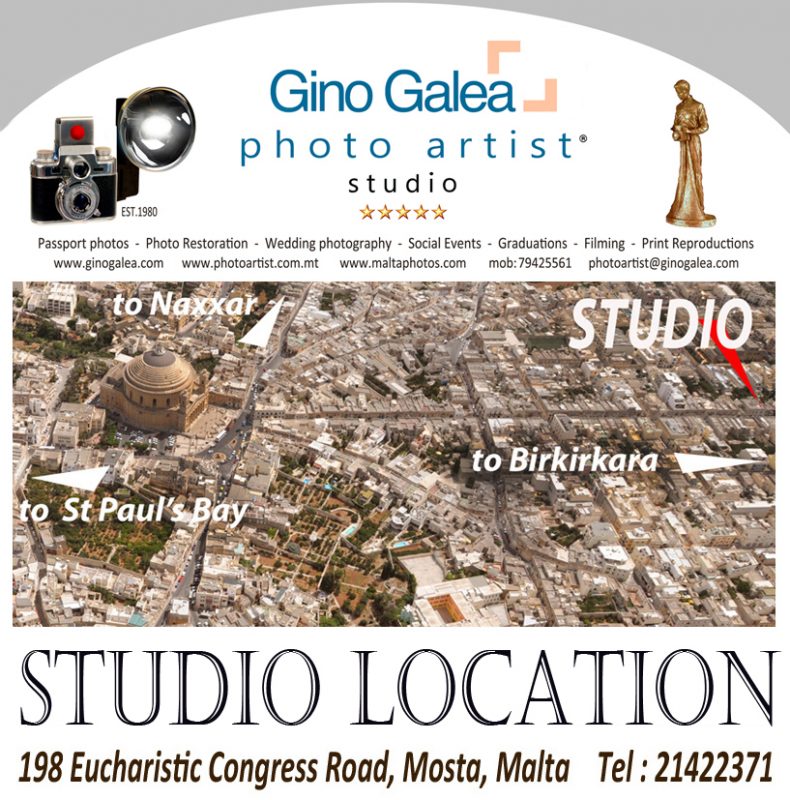
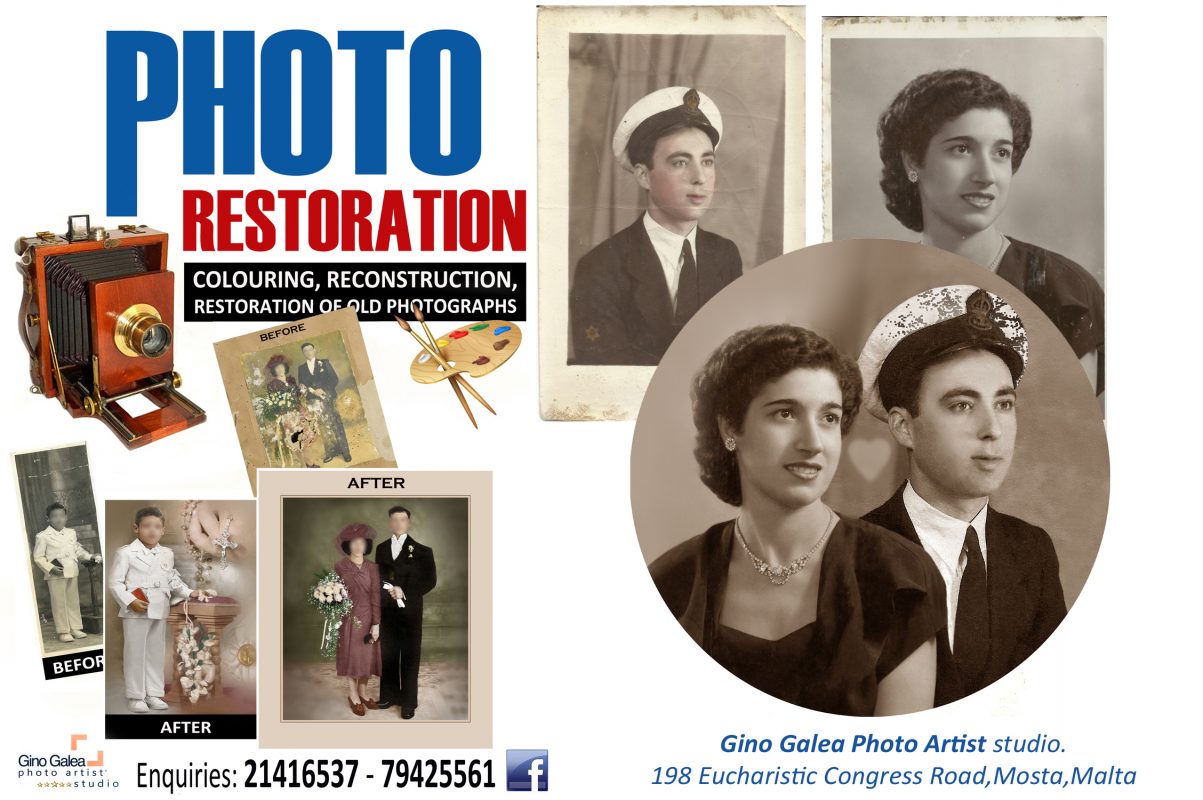
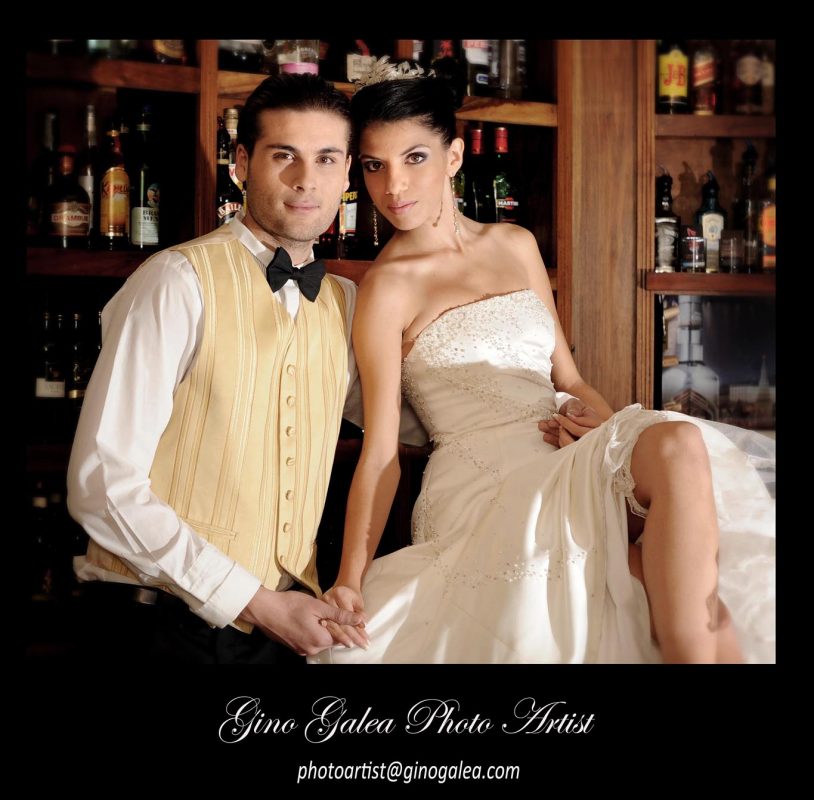
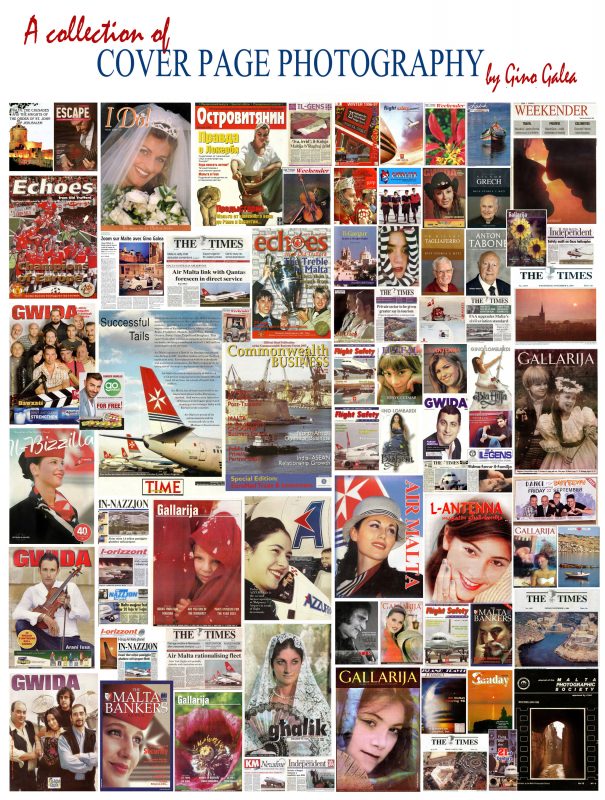
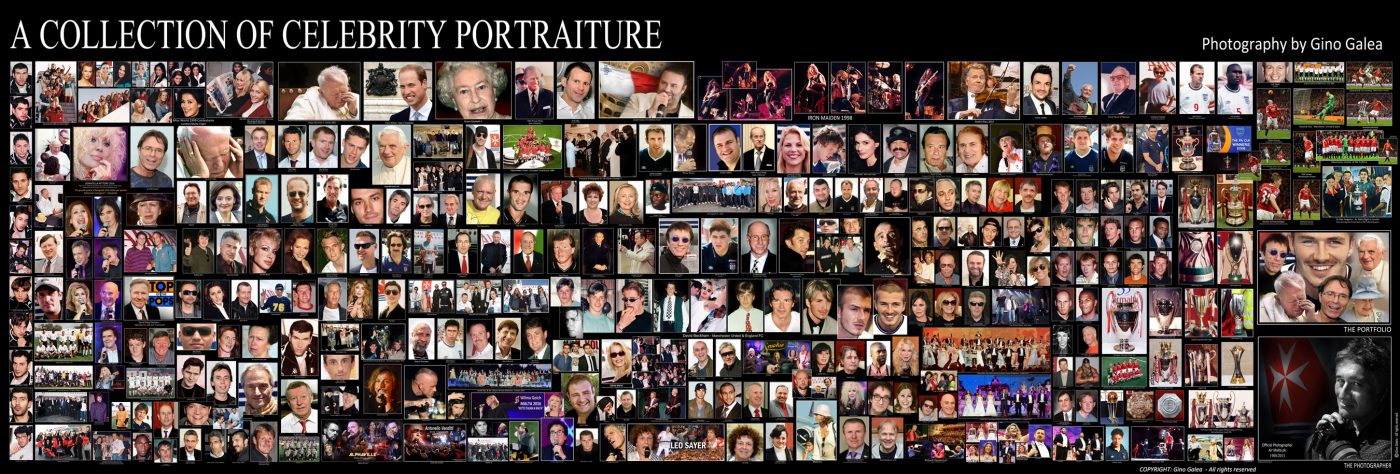
You are welcome to LIKE and SHARE our official page on Facebook: https://www.facebook.com/maltaweddingphotographers/
